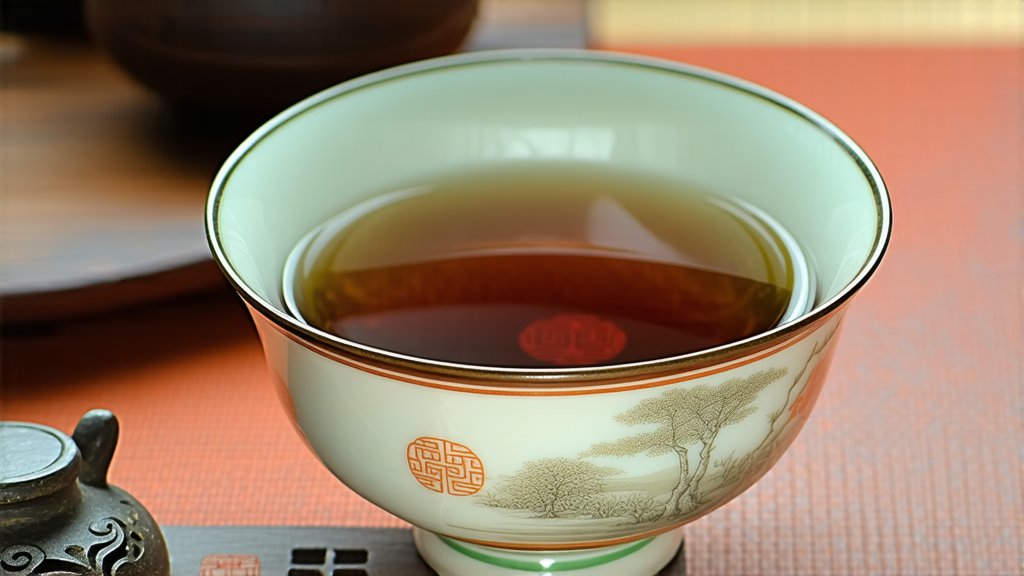
Bai Mudan, often referred to as the "White Peony" of the tea world, stands as one of the most revered and distinctive varieties within the realm of Chinese white teas. This exquisite tea, hailing from the Fujian Province, boasts a history that intertwines with the cultural tapestry of ancient China, offering a window into the timeless traditions that have shaped its production and appreciation.
Historical Background
The origins of Bai Mudan can be traced back to the early Qing Dynasty, around the mid-18th century. It is said that this tea was first created by accident when a heavy rain prevented the proper drying process of the buds intended for Gong Mei (Tribute Eyebrow), another prestigious white tea. To salvage the crop, the tea master spread the leaves on bamboo mats to dry naturally under the sun, which resulted in the unique characteristics that define Bai Mudan today. This serendipitous event led to the birth of a tea that would become highly coveted for its delicate flavor and aromatic complexity.
Varieties and Cultivation
Bai Mudan primarily grows in the Fuding area of Fujian Province, where the climate and soil conditions are ideal for cultivating high-quality white tea. The tea bushes used for Bai Mudan are typically small-leafed varieties, known for their resilience and ability to produce leaves with a high concentration of natural fragrances. The name "Bai Mudan," translating to "White Peony," aptly describes the appearance of the tea when infused—the downy silver tips resemble the petals of a peony flower, while the greener leaves symbolize the plant's lush foliage.
Processing Techniques
The magic of Bai Mudan lies not only in its genetic makeup but also in its meticulous processing, which involves minimal intervention to preserve its natural essence. The journey from leaf to cup unfolds as follows:
-
Plucking: Only the youngest shoots and leaves, including the bud and the first two leaves, are handpicked during the spring season. This selective harvest ensures optimal tenderness and flavor.
-
Withering: The freshly picked leaves are spread thinly on bamboo mats or screens and left to wither under the gentle sun or in shaded areas. This step allows the leaves to lose moisture gradually, enhancing their natural sweetness and developing a subtle oxidation that contributes to Bai Mudan's unique character.
-
Drying: After withering, the leaves undergo a final drying phase, either through sun exposure or low-temperature baking, to further reduce moisture content and stabilize the tea for storage.
-
Sorting and Packaging: Once dried, the tea is carefully sorted to separate the different grades based on leaf size and quality. It is then packaged in airtight containers to maintain freshness.
Appreciating Bai Mudan: A Sensory Journey
To truly appreciate Bai Mudan, one must engage in a mindful tasting ritual that highlights its nuanced flavors and aromas. Here's a guide to savoring this enigmatic tea:
-
Preparation: Use a transparent glass teapot or a Gaiwan (a traditional Chinese tea bowl with a lid) to observe the unfurling leaves. Rinse the leaves briefly with hot water (around 80-85°C or 176-185°F) to awaken their flavors.
-
Infusion: Add hot water and let the leaves steep for about 1-2 minutes for the initial infusion. Subsequent infusions can be longer, as Bai Mudan is known for its ability to release multiple layers of flavor with each brewing.
-
Observation: Watch as the pale yellow liquor reveals itself, a testament to the tea's purity and light processing. The infusion should appear clear and bright, with a slight viscosity that hints at its richness.
-
Aroma: Bring the cup close to your nose and inhale deeply. Bai Mudan offers a bouquet of floral scents, often likened to orchids, lilacs, and melons, accompanied by subtle hints of honey and fresh hay.
-
Tasting: Take a slow sip, allowing the tea to coat your palate. Note the initial sweetness, followed by a gentle, refreshing aftertaste that lingers. The texture is silky smooth, with a balanced profile that combines mild astringency with a lingering sweetness.
-
Multiple Infusions: Bai Mudan is renowned for its longevity in terms of infusions. Each subsequent brewing will unveil new dimensions of flavor, from floral and fruity notes to more earthy and mineral undertones, reflecting the depth and complexity of this remarkable tea.
Conclusion
Bai Mudan represents more than just a beverage; it encapsulates centuries of Chinese tea culture, embodying the harmony between nature and human craftsmanship. Its minimal processing not only preserves its inherent qualities but also invites tea enthusiasts worldwide to embark on a sensory exploration that transcends borders and time. As you indulge in a cup of Bai Mudan, allow yourself to be transported to the misty mountains of Fujian, witnessing firsthand the artistry and tradition that have made this tea a true treasure of the East.